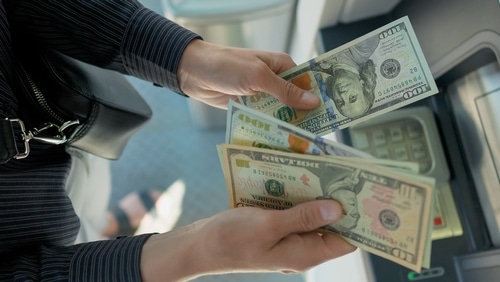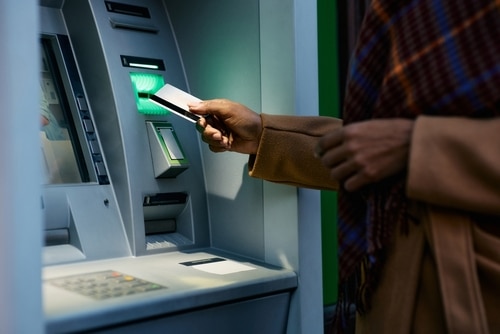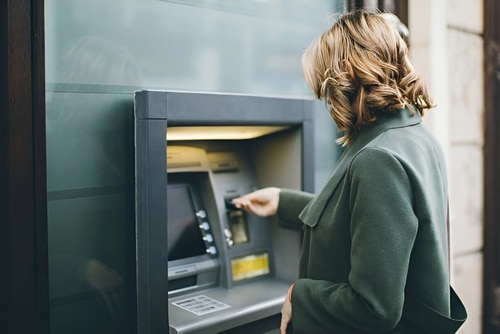Accessing your money using an Automated Teller Machine (ATM) is quick and convenient no matter where you are in the world. However, there are a number of security risks associated with ATM withdrawals that you should be aware of, including malware, card tapping, keypad jamming, physical attacks, card skimming, and shimming. You can avoid these problems by learning how to operate an ATM safely.
Whether you’re travelling abroad, recently relocated, or a long-time resident of another country, ATM troubles can seriously disrupt your journey. This Remitly guide shares some tips on ATM safety, so that you can stay focused on the important things, like enjoying your life in a new country or sharing money with family back home using our convenient, safe transfer services.
Understanding the importance of ATM safety
ATMs are carefully designed to protect your security and safety. However, there are always certain risks that you take when withdrawing money from a machine.
Criminals target ATMs because the machines connect directly to your bank account. With a few tricks, they can steal information and access accounts, or target ATM users who are likely carrying cash.
In 2024, the Federal Bureau of Investigations (FBI) reported increased cases of jugging-criminals targeting victims they believed to be carrying a lot of cash. This usually takes place outside banks, credit unions, or ATMs. Thieves target victims before they drive away in their cars or may even follow them until they reach a more secluded location.
Potential risks involved with ATM withdrawals
Physical robberies aren’t the only risks associated with using an ATM. Let’s examine how offenders target and steal from ATM customers.
- Card skimming is a non-contact form of theft. The offenders install skimming devices inside ATMs to capture and steal card data and PINs. They then create fake cards and use them to make unauthorized withdrawals from your account. Criminals may also use cameras to record you entering your PIN.
Inspect machines and card readers for cameras and skimmer devices, and alert authorities when you spot them. Look out for sticky card readers, tape, bulky card readers, loose-fitting attachments, or foreign objects.
- Shimming is similar to card skimming; the difference is the technology used. Card skimming steals data from the card’s magnetic strip, while shimming steals data from the EMV chip. Shimming uses malware to steal your card’s data.
- Card trapping occurs when criminals insert devices that retain your ATM card when you insert it in the slot. This forces you to leave the card behind while you contact the bank. Fraudsters then retrieve the card and clone it.
- Cash trapping works differently from card trapping. Criminals use glue to trap the cash you’ve withdrawn. They don’t steal your data, but rob you softly by waiting for you to leave the machine, believing that there’s a technical issue. They then move in and collect your cash.
Banks may be hesitant to refund cash in trapping cases, especially if the transaction was authorized. So, carefully inspect the ATM and report any suspicions of fraud as soon as your card or cash fails to eject.
- Explosive attacks involve criminals using brute force and explosives to force open ATMs. You’re at risk of serious injury if they attack while you’re using the machine. Always check for suspicious activities around you before starting your transaction.
- Malware is malicious software that criminals use to manipulate ATMs to dispense a lot of cash without debiting the criminal’s account (jackpotting). They can also use the technology to steal PINs and card details.
- Keypad jamming techniques are used to jam or disable key ATM buttons that complete transactions, such as “enter” and “cancel.” Criminals bet on customers getting frustrated and walking away from the machine. They then enter and complete the transaction, stealing your cash, card, or both.

Seven precautions to take when withdrawing money from the ATM
Don’t let the scams above put you off of using ATMs. With a few safety precautions, a little awareness, and common sense, you can use these convenient machines without problems.
1: Prepare your ATM card and check its condition
ATM cards shouldn’t be scratched or bent. ATMs read and process data from your card using the magnetic stripe or chip. Bending or scratching the card makes this almost impossible. Your card may fail to work at the ATM.
When this happens, a fraudster only needs to forcefully eject your card to steal and clone data while you seek assistance.
2: Know your PIN, memorize it, and keep it secure
As stated earlier, ATMs are designed to ensure safety and security, so they have several safeguards in place just in case you make a mistake.
The machine will display an error message when you enter the incorrect PIN, lock the card after several mistakes, and finally swallow the card, requiring you to contact the bank for help.
You risk losing your card if criminals carry out explosive attacks before you can retrieve the card.
3: Choose a well-lit, high-traffic ATM location
Isolated and poorly-lit ATM locations have a higher risk of security breaches, because criminals tend to avoid well-lit and high-traffic areas. Surveillance cameras in well-lit areas have better and clearer images, making it harder for fraudsters to conceal their identities and activities. You’ll also notice suspicious activities or tampered ATMs faster when the place has adequate lighting.
This is especially important if you’re visiting an ATM at night or in an unfamiliar location. If you’re travelling or new to an area, be sure to select the machine that has the most visibility and plenty of people around for a more secure experience.
4: Avoid using out-of-network ATMs
An out-of-network ATM isn’t owned and operated by institutions within your bank’s network. This means that withdrawals will be expensive due to additional fees.
But that’s not all—there are additional security risks associated with out-of-network ATMs:
- Increased risk of card skimming
- Higher risk of card retention
- Outdated software can increase the chances of malware attacks
- High risk of network and data breaches due to less secure networks
- Increased chances of making mistakes because you’ll be working with unfamiliar machines
5: Stay alert and be aware of your surroundings
Fraudsters and thieves hang around the ATMs they are targeting, either to follow you or to access the machine as soon as you leave, having encountering “technical issues.” One person or a team could be responsible for the crime.
Look out for the following suspicious activities:
- Someone loitering nearby
- A peeping or nosy neighbor from the nearby ATM booth
- Someone standing in a strategic position, surveilling the ATM
- Someone offering unsolicited help
- Someone following you
- Unusual chats and requests for directions by strangers immediately after you leave the ATM
- Evidence of physical tampering with the ATM, such as a damaged or blocked card slot
- Technical issues with the machine
- Unusual lights or camera

6: Shield the keypad when entering your PIN
Sometimes, ATM thieves don’t have to use technology to steal your PIN. Someone has to pose in the ATM booth next to the one you’re using, then peep to see and memorize your PIN.
This person could be working with a team, who may be waiting for you to leave the machine, to physically attack you and steal your card, or to use your PIN to access money from your account.
So be sure to enter your PIN securely by shielding the keypad with your other hand, to avoid nosy neighbors and strategically-placed hidden cameras.
7: Minimize time spent at the machine
ATM thieves pick on their victims based on the belief that they are carrying a lot of money. Staying too long at the machine may make them think you’re transacting huge amounts, unknowingly making yourself a target.
Steps to withdraw money safely from an ATM
With all these safety precautions in mind, take these steps to withdraw money from an ATM.
- Insert your debit or credit card into the card reader.
- Follow on-screen prompts and enter your PIN securely.
- Select the withdrawal option and desired amount.
- Retrieve your card and take the dispensed cash promptly.
- Store your card and cash in a safe place before leaving the ATM.
What to do after withdrawing money from the ATM
Your safety also matters after successfully withdrawing money from the ATM, because you have two things that a thief potentially wants – your card and cash.
Stay safe by:
- Securely storing your cash and ATM receipts
- Verifying your bank account balance and transaction details
- Not counting money in public
- Being aware of your surroundings
- Entering a money transfer location near the ATM, if available. Thieves will assume that you’ve offloaded the cash and sent it somewhere. Alternatively, enter a shopping center near the ATM and buy a few things if you can afford it.
- Having a friend or family member wait for you outside the ATM, especially at night
- Reporting any suspicious activities to the authorities
- Monitoring your accounts regularly to flag and report any unauthorized activities to your bank
FAQs
What should you do before you withdraw money from the ATM?
Prepare your ATM card and check its condition, know your PIN, choose a well-lit, high traffic ATM location, avoid out-of-network ATMs, stay alert and be aware of your surroundings, shield the keypad when entering your PIN, and minimize time spent at the machine.
What is the process for withdrawing cash from an ATM?
Insert your debit or credit card into the card reader, follow on-screen prompts, enter your PIN securely, select the withdrawal option and desired amount, retrieve your card, and take the dispensed cash promptly.
How do banks investigate ATM withdrawals?
Banks take ATM fraud investigations seriously. They first detect fraud themselves or when customers report suspicious activities on their accounts, temporarily freeze the account, investigate the incident, involve the police when fraud is confirmed, and reimburse the victim.
How do ATMs detect fake money?
You can dispense or deposit money in ATMs. ATMs check and flag fake money in both transaction types by measuring banknote dimensions, checking the magnetic ink on the notes, analyzing the UV-sensitive ink on the banknotes, and comparing the note’s image to what’s stored in the electronic templates.
